VISIT TO THE VAN GOGH LIVE EXHIBITION IN BRISBANE.
My good friend Barb is also a huge fan of Vincent Van Gogh and she had already booked and paid to go to this very exhibition when she was heading to France last year, before Covid hit and all of our travel plans got cancelled.
The reviews for this experience was amazing and inspired us to prepare to transcend time and space as we accompanied our art hero on a journey through the Netherlands, Arles, Saint Remy and Auvers-sur-Oise where many of his timeless masterpieces we created.
The exhibition is set to an evocative classical score, with a thrilling display of over 3000 inspirational images which transform every surface that surrounds you. It gives you an opportunity to not just look at his spectacular paintings but to actually step inside of them and feel their power...
The exhibition was set up at Northshores in Brisbane, almost next door to Eat Street Markets...
 | |
| Eat Street Markets... |
The display is set up in a specially built venue which measures a huge 25,000 square feet and it was designed by Australian Anna Cordingley.
As we had pre booked and pre paid for our tickets we just had to show them as we walked through the door. Admission charges were pretty reasonable only costing us $37. Considering how wonderful it was, we thought it was money well spent...
In spite of his lack of success during his lifetime, van Gogh’s legacy lives on having left a lasting impact on the world of art. Van Gogh is now viewed as one of the most influential artists having helped lay the foundations of modern art.
Despite only working for 10 years - from the age of 27 up until his early death at 37, Vincent Van Gogh was incredibly prolific. He produced more than 900 paintings and many more drawings and sketches, which works out at nearly a new artwork every 36 hours....
Many artists have drawn inspiration from Vincent’s self-portraits. They have been reproduced an infinite number of times since the early 20th century.
The self-portraits put a face to the man who became the archetype of the artist as tortured genius. The yellow straw hat is now firmly associated with Vincent and his love of the sun and the colour yellow.
Vincent Van Gogh's "The Starry Night is considered among the greatest works in western art and is definitely the most famous work of Vincent Van Gogh. This painting was painted towards the end of his life in 1889 and was painted this from memory during the day.
It depicts the view outside Van Gogh's sanitarium room window at Saint-Remy-de-Provence in France. The work shows the artists's interest in astronomy and a study made by the Griffith Park Observatory demonstrates that Vincent represented the Moon, Venus, and several stars in the exact position they occupied that clear night.
Though Van Gogh revisited this scene in his work on several occasions, "Starry Night" is the only nocturnal study of the view and this masterpiece is now on display
Unfortunately, he relapsed. He began to suffer hallucination and have thoughts of suicide as he plunged into depression. Accordingly, there was a tonal shift in his work. He returned to incorporating the darker colors from the beginning of his career and Starry Night is a wonderful example of that shift. Blue dominates the painting, blending hills into the sky. The little village lays at the base in the painting in browns, greys, and blues. Even though each building is clearly outlined in black, the yellow and white of the stars and the moon stand out against the sky, drawing the eyes to the sky. They are the big attention grabber of the painting.
Starry Night is one of the most recognized pieces of art in the world. It is absolutely everywhere, too. It can be seen on coffee, mugs, t-shirts, towels, magnets, etc. Honestly, it sometimes feels as if the painting’s fame has exceeded that of its creator. It is a magnificent piece of art. That Starry Night resonates with so many people is a testament to how its beauty is timeless and universal.
In Van Gogh's first months in Paris, he stayed in his brother Theo's small apartment on Rue Laval. Vincent's behavior could be disruptive and unnerving to Theo and others. A friend of Theo's wrote of Vincent, "The man hasn't the slightest notion of social conditions. He is always quarreling with everybody. Consequently Theo has a lot of problem getting along with him." As means of calming himself, Vincent painted fall fruit in the autumn of 1886, which he imbues with seemingly "supernatural vitality and beauty." Multi-colored, contrasting colored brushstrokes radiate in a circle from the fruit with an "aura of electrical radiance."
Still Life with Apples, Pears, Lemons and Grapes was Van Gogh's opportunity to explore Blanc's recommendation about combining colors: "If one brings together sulfur (yellow) and garnet (dark red), which is its exact opposite, being equidistant from nasturtium (orange) and campanula (blue-mauve), the garnet and sulfur will excite one another, because they are each others' complementaries." In the background, Van Gogh used short brushstrokes of light blue and pink, giving the impression that the fruit is sitting in a basket. Van Gogh may have seen Claude Monet's Still Life with Apples and Grapes in Paris, but while the subject matter is roughly the same, the composition is not. Monet paints the fruit on a diagonally placed table to "anchor his composition in space." Having removed any form of distraction, such as a table or background, Van Gogh placed each piece of fruit by itself, creating a "semi-abstract, decorative effect."
Basket of Apples was made in 1885 when Van Gogh experimented with Delacroix's color theory. To his brother Theo, Van Gogh wrote: "There is a certain pure bright red for the apples, then some greenish things. Now there are one or two apples in another color, in a kind of pink – to improve the whole. The pink is the broken color, created by mixing the first red and green mentioned. This is why there is a connection between the colors. Then I painted a second contrast, in the back- and foreground. One was given a neutral color by "breaking" blue with orange; the other the same neutral color, only this time changed by adding a little yellow."
Van Gogh often tested his colour combinations before painting, with threads of wool in various hues. Only after that would he use his valuable paint. He had an attractive red lacquer box in which he kept his balls of wool. That testing method was used for this painting.
Some of this floral art is considered among his most famous masterpieces. For example, his sunflower series is perhaps the most famous of all his works. The flowers he chose to paint were put into floral arrangements standing in vases and flowers laying down on the ground. He also loved to paint flowers in their natural habitat, the countryside, and gardens. From van Gogh’s depiction of sunflowers, irises, roses, poppies, cornflowers, myositis, and chrysanthemums, he brought life and emotion to his work, putting his unique perspective on it.
Today Van Gogh is loved for his passion which is indicative of his work. His sunflower painting is one of the most loved of his flower oil paintings. Other favorite flower paintings by van Gogh are of irises.
In 1889, Vincent painted many paintings of irises. They were painted whilst he lived at the asylum at Saint Paul-de-Mausole in Saint Remy-de-Provence in France. Each one of his irises are unique. He carefully studied their movements and shapes to creat various curved silhouettes bounded by wavy, twisting and curling lines. The cropped composition, divided into broad areas of vivid colour with monumental irises overflowing its borders, was probably influenced by the decorative pattering of Japanese woodblock prints.
His paintings of delicate almond blossoms against a clear blue sky is from a group of several paintings of blossoming almond trees. Van Gogh painted this to celebrate the birth of his nephew and namesake, son of his brother Theo and sister-in-law Jo. He chose the branches of an almond tree – a variety that blossoms as early as February in the south of France, where it announces the coming spring. The subject, the bold outlines, and the positioning of the tree in the picture plane are borrowed from Japanese printmaking.
One in a series of sunflower oil paintings by Vincent van Gogh. The series show sunflowers in all stages of life, from full bloom to withering. The paintings were considered innovative for their use of the yellow spectrum, partly because newly invented pigments made new colors possible.
Some of his most famous works are his Sunflower series. He painted a total of twelve of these canvases, although the most commonly referred to are the seven he painted while in Arles in 1888 to 1889. The other five he painted previously while in Paris in 1887.
There are many pieces within this series of paintings ( each is clearly identifiable as a Van Gogh work) in which there are only minor differences that separate them. The overall layout of the painting along with the positioning of the actual sunflowers usually remains the same in similar paintings.
As Vincent anticipated in 1889, the Sunflowers finally became his and served - comgined with self-portraits, as his artistical arms and alter ego up to the present day; no retrospective Van Gogh exxhibition since 1901 voluntarily missed to include them, and a wealth of forgeries, as well as record setting price paid at auction, acknowledges their public success.
Van Gogh painted about 20 paintings for Joseph Roulin and his family, and he was very proud of these portraits and wrote to his brother Theo about them. He mentioned "the modern portrait" excited him the most.
Vincent Van Gogh is instantly recognizable by his reddish hair and beard, his gaunt features, and intense gaze. Van Gogh painted some 36 self-portraits in the space of only ten years. They tell us that he had red hair, green eyes and an angular face. Yet each of those faces is different. Vincent himself wrote:
‘People say – and I’m quite willing to believe it – that it’s difficult to know oneself – but it’s not easy to paint oneself either.’
Perhaps only Rembrandt produced more self portraits, and his career spanned decades. For many artists, like Rembrandt and Van Gogh, the self-portrait was a critical exploration of personal realization and aesthetic achievement.

Many artists have drawn inspiration from Vincent’s self-portraits. They have been reproduced an infinite number of times since the early 20th century.
The self-portraits put a face to the man who became the archetype of the artist as tortured genius. The yellow straw hat is now firmly associated with Vincent and his love of the sun and the colour yellow.
Vincent produced his self-portraits because he wanted to practise painting people.
The majority of them – over 25 – were done while he was in Paris (1886–88). He was short of money in that period and struggled to find models. So the artist chose the simplest solution and painted himself.
His self portraits often tell us about his personality as Vincent often presented himself as restrained and serious in his self-portraits, with a look of concentration on his face..
All the same, something of Vincent’s personality can be found in each self-portrait. He described the last one he did in Paris as ‘quite unkempt and sad’ [...] something like, say, the face of – death’. That’s how he felt at the time: mentally and physically exhausted.
In his Self-Portrait with Grey Felt Hat, 1887, Van Gogh was all eyes and ears in Paris. Here we see clearly how he studied and applied the technique of the Pointillists. But instead of painting points, he uses short stripes of paint in different directions. He even created a kind of halo around his head. It serves as a sort of prelude to what would later become his trademark swirls
This, the last of Van Gogh's self-portraits and one of the
greatest, was painted only months before his death.
The compulsive, restless all over ornament of the background, recalling the
work of mental patients, is for some physicians evidence that the painting was
done in a psychotic state. But the self-image of the painter shows a masterly
control and power of observation, a mind perfectly capable of integrating the
elements of its chosen activity. The background is similar to the rhythms of The Starry Night
which the portrait resembles also in the dominating bluish tone of the work.
The flowing, pulsing forms of the background, schemata of sustained excitement,
are not just ornament, although related to the undulant forms of the decorative
art of the 1890s; they are unconfined by a fixed rhythm or pattern and are a
means of intensity, rather, an overflow of the artist's feelings onto his
surroundings. Besides, the powerful modeling of the head and bust, so compact
and weighty, the wall pattern appears a pale, shallow ornament. Yet the same
rhythms occur in the figure and even in the head, which are painted in similar
close-packed, coiling, and wavy lines. As attention shifts from the man
to his surroundings and back gain, the analogies are multiplied; the nodal
points, or centers, in the background ornament begin to resemble more the eyes
and ear and buttons of the figure.
Van Gogh started to paint very late in his life, when he was 27 years old. He never received any formal training. His first self-portraits, like this one, are dated 1886, which is also the exact time he portrayed himself as an artist. Notice the sombre colors he uses. He would soon abandon them after seeing the work of the Impressionists in Paris.
His Self-Portrait as a Painter, 1887-1888 was the last work that he produced in Paris. At the time, Vincent felt exhausted by this frantic city and that shows in his face. He told his sister, Wil, how he had portrayed himself: “wrinkles in forehead and around the mouth, stiffly wooden, a very red beard, quite unkempt and sad.”
Though sad and melancholy, he made a statement. Van Gogh here is a painter, a modern artist who uses a new painting style, with bright, nearly unblended colours.
After his Paris episode, Vincent van Gogh moved to Arles in hopes of creating a community for artists to exist in mutual supportiveness and encouragement. He invited Paul Gauguin, an artist whom he had befriended in Paris, to come stay with him.
Three of his portraits also hint at his illness. On 23 December 1888, Vincent cut off his left ear in a state of total confusion. It would be the first of a series of mental breakdowns. He was reluctant to discuss the incident in his letters, but he did ‘report’ on it in two self-portraits.
Vincent did not portray himself as a sick, broken man for the sake of effect or to arouse pity. He was convinced that painting would help him to heal. ‘I retain all good hope’, he wrote to Theo.
Nature was the point of departure for Vincent’s art throughout his life. It was the same for Japanese artists, and he recognised that. At the same time, Japanese prints gave him the example he needed to modernise.
Vincent was keen to respond to the call for a modern, more primitive kind of painting. Japanese prints, with their expanses of colour and their stylisation, showed him the way, without requiring him to give up nature as his starting point. It was ideal.
“Café Terrace at Night” by Vincent van Gogh depicts the terrace of the café on the Place du Forum in Arles, France in the night. The night is painted with no black in the sky, it features only a blue sky with Van Gogh’s unique star motifs.
The Cafe is illuminated with sulfur pale yellow and citron green. Van Gogh painted the view looking south towards the lit terrace of the famous coffee house.
He contrasted the brightly lit Cafe with the darkness of the rue du Palais, which led up to the wall of buildings and towards the tower of a former church, which is now Musée Lapidaire.
On the right, Van Gogh painted the light from the shop windows as well and some green branches of the trees surrounding the place.
The painting is not signed, but van Gogh mentioned it in three letters. After finishing this painting, he wrote a letter to his sister:
This painting of a simple chair set on a bare floor of terracotta tiles is one of Van Gogh’s most iconic images. It was painted in late 1888, soon after fellow artist Paul Gauguin had joined him in Arles in the south of France. The picture was a pair to another painting, Gauguin’s Chair (Van Gogh Museum, Amsterdam). They were to be hung together, with one chair turned to the right, the other to the left.
Both chairs function as surrogate portraits, representing the personalities and distinct artistic outlooks of the two artists. While Van Gogh’s chair is simple and functional, Gauguin’s is an elegant and finely carved armchair. Van Gogh’s chair, on which he placed his pipe and tobacco, is shown in bright daylight. Gauguin’s, with two novels on its seat, was painted at night and is illuminated by a candle and gas light.
Wheatfield with Crows is one of Van Gogh's most famous paintings. It is often claimed that this was his very last work. The menacing sky, the crows and the dead-end path are said to refer to the end of his life approaching. But that is just a persistent myth. In fact, he made several other works after this one.
Van Gogh did want his wheatfields under stormy skies to express 'sadness, extreme loneliness', but at the same time he wanted to show what he considered 'healthy and fortifying about the countryside'.
Van Gogh used powerful colour combinations in this painting: the blue sky contrasts with the yellow-orange wheat, while the red of the path is intensified by the green bands of grass.
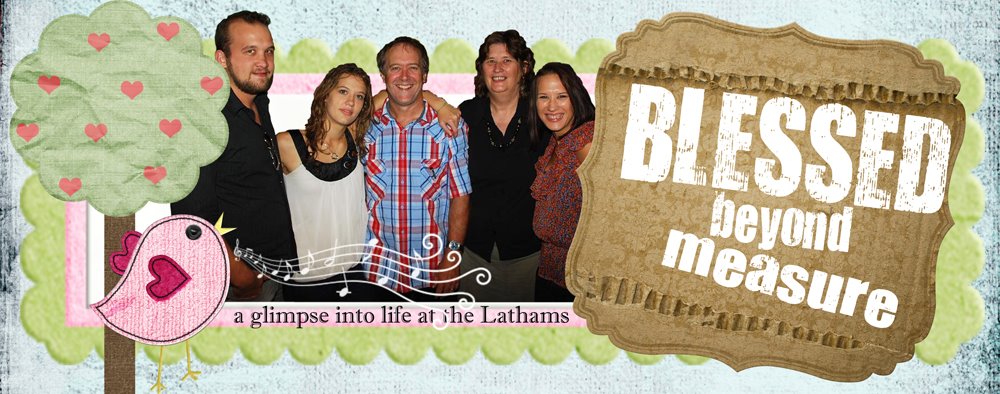































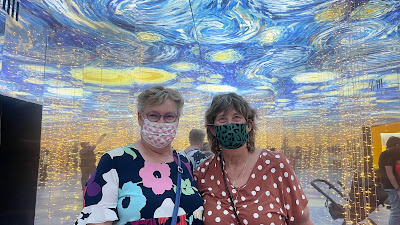
































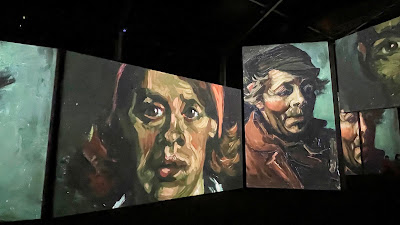




















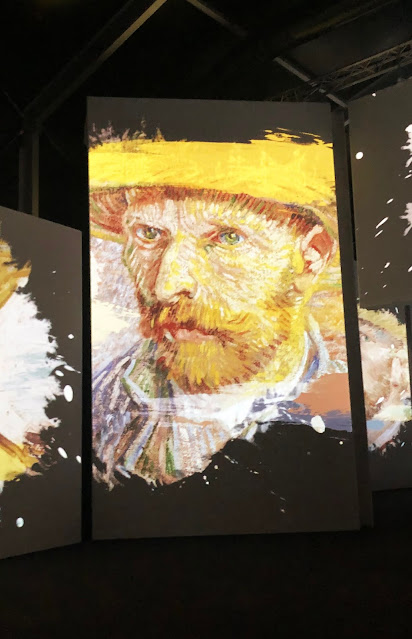







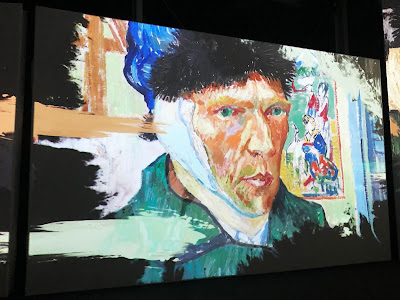































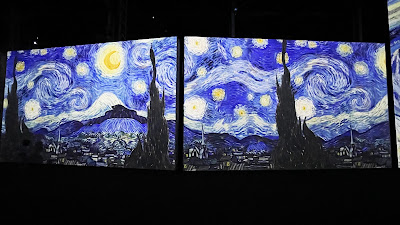






































































































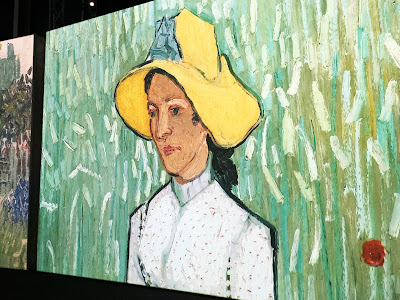




































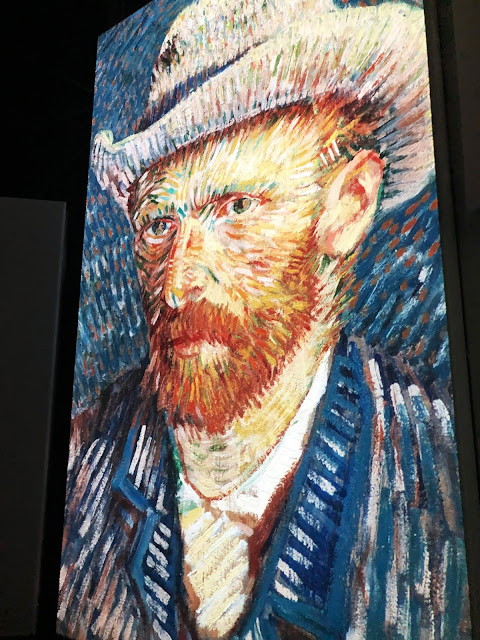




































































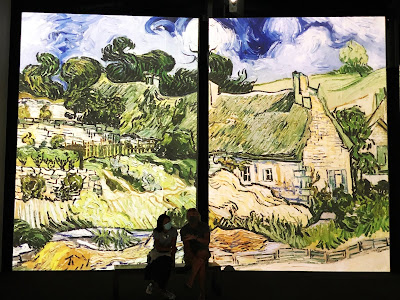



























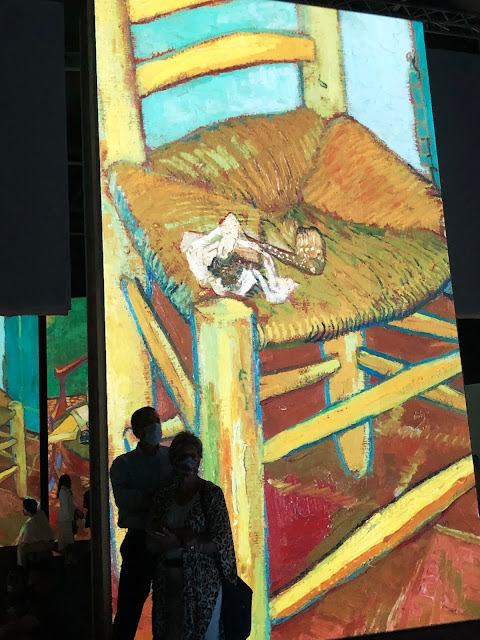















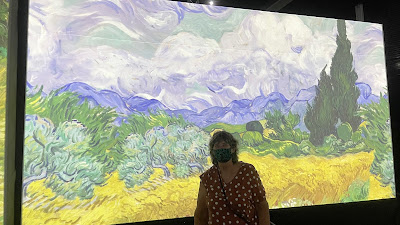










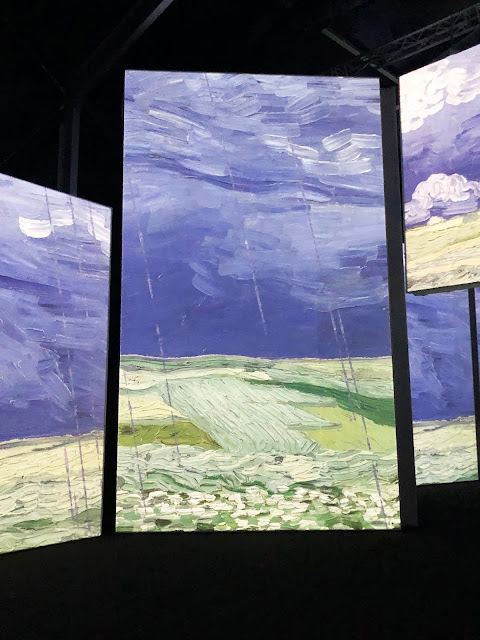



















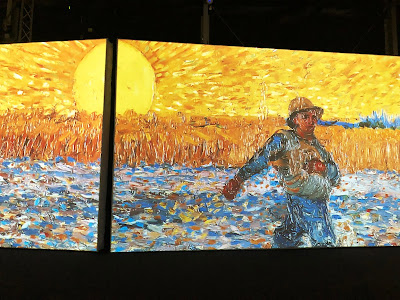

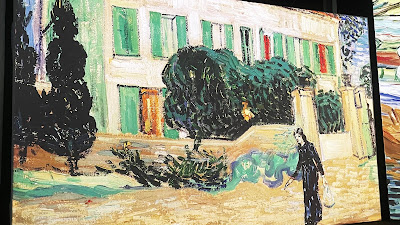









































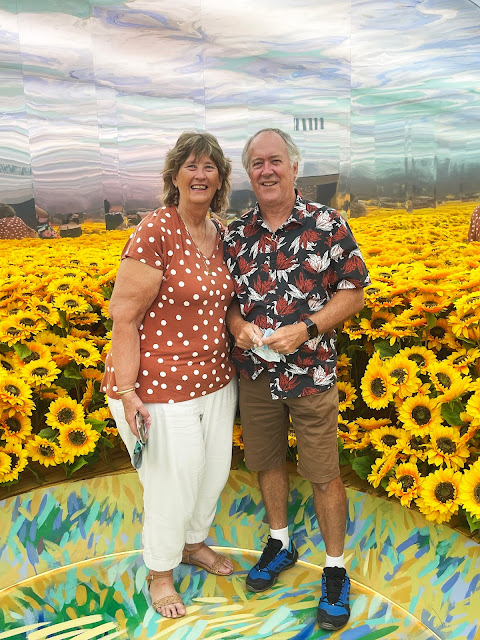



























0 comments:
Post a Comment